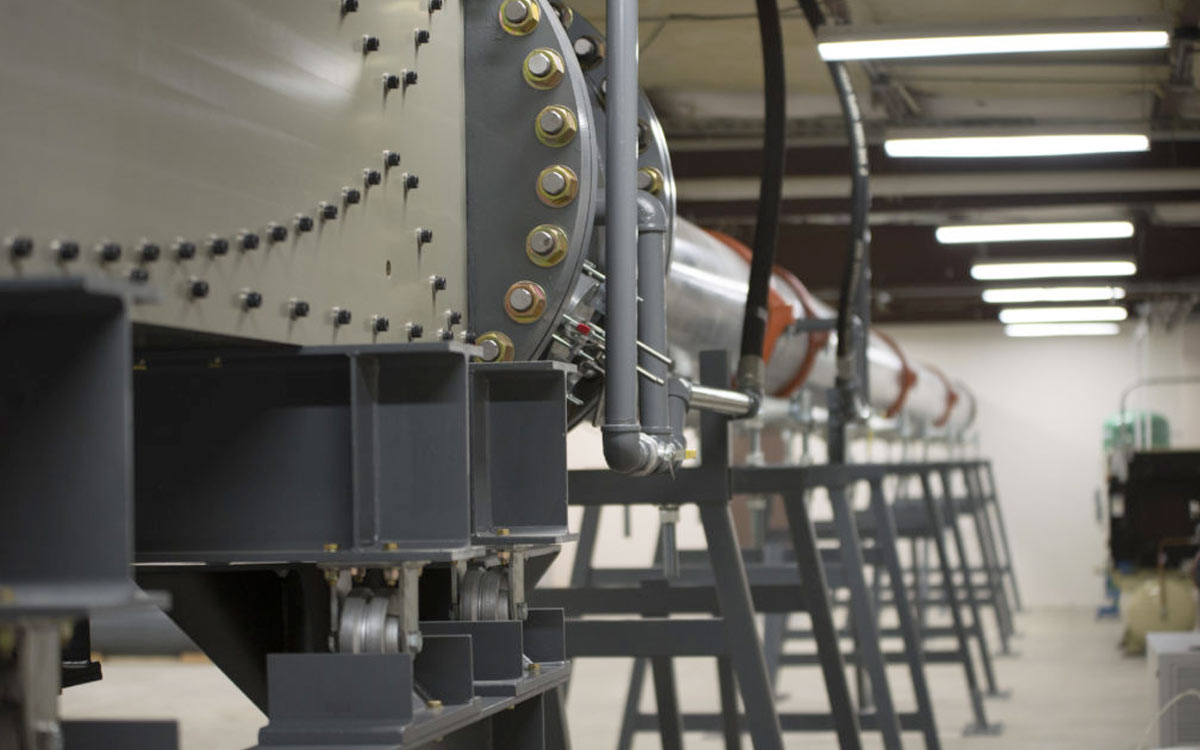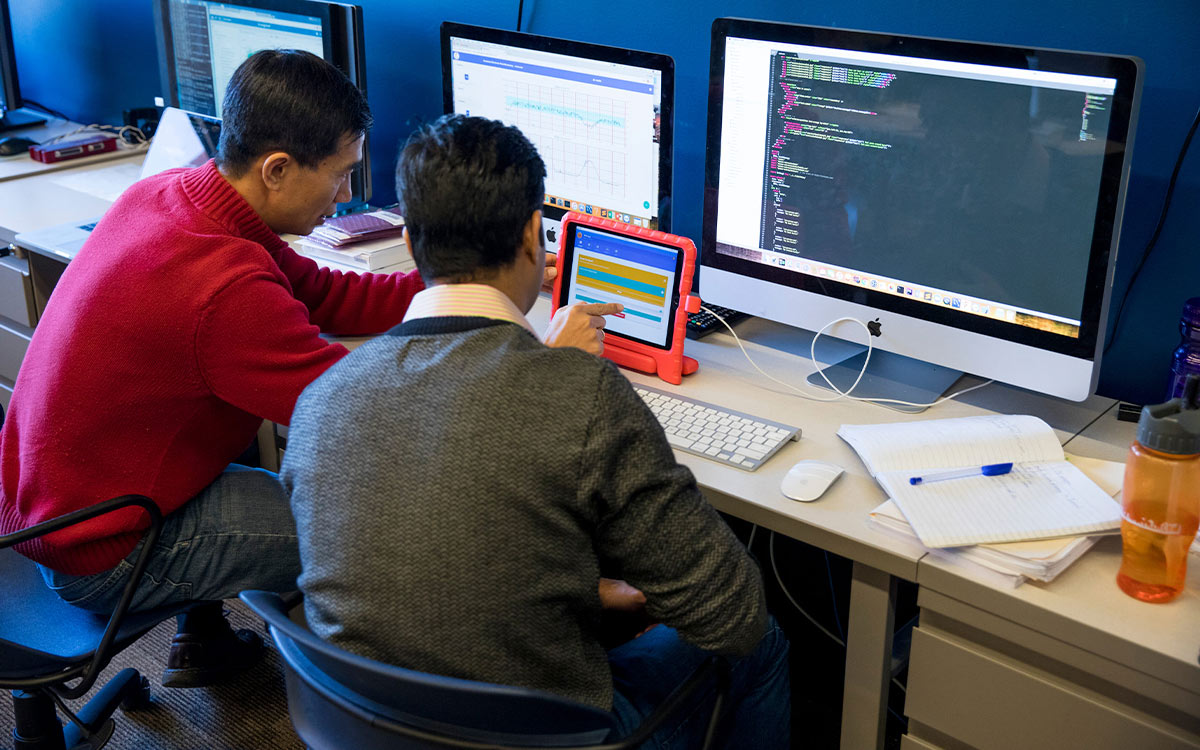
Going Green in the Big Blue Sky
Condra Chair of Excellence Fred Wang (EECS) recently led a team that included researchers at Boeing and NASA in a five-year, $2M project developing a high-performance, low-weight inverter that opens up electrified propulsion for use in aircraft, greatly improving engine efficiency and drastically reducing the carbon footprint from aviation.
The inverter is the first capable of operating at a megawatt level using cryogenic cooling—a significant technological advance. The team also showed the technology is scalable to much larger sizes, crucial for widespread adaptation.
The inverter helps turn energy into physical movement of an aircraft’s motor at a rate of more than 99 percent efficiency, an almost one-to-one ratio of energy used to propulsion produced. Cryogenic cooling, which can be done without added weight by using liquified natural gas or liquid hydrogen, makes the inverter a natural fit for working with future superconducting motors, further helping the efficiency of the system.

Hacking Devices for a Cause
The growing field of electronic personal assistants increasingly relies on voice recognition for security. While it may seem like the system recognizes your voice in the same way another person would, machines actually rely on deep neural networks for speech and voice recognition.
Assistant Professor Jian Liu (EECS) is working to improve the security of personal assistant systems by hacking them, helping figure out the weak spots before they can be exploited.
Liu and his team have found that signals hidden within otherwise normal-sounding content—like music, birds singing, or phone notification sounds—might unlock and control devices, meaning your data could be accessed without you ever knowing someone was making the attempt. Known as adversarial perturbations, these sounds will help the team figure out the best way to exploit each device, which, in turn, will let them know where improvements must be made.

Solving a Key Hypersonics Question
Understanding the forces at play within hypersonic wind tunnels and how that data matches real-world scenarios has long been a stumbling block, but Assistant Professor Damiano Baccarella (MABE) is looking at a way to better translate performance between testing and actual flight, a problem known as non-equilibrium.
Baccarella aims to provide a better understanding of thermochemical non-equilibrium in high-enthalpy hypersonic wind tunnels and to develop strategies to quantify and possibly mitigate its effects through testing at the state-of-the-art Tennessee Hypersonics and Propulsion Laboratory, now under construction. The completion of this work is expected to allow a closer matching between ground testing and flight data, enabling unprecedented research capabilities in hypersonics.
His idea got the attention and backing of the Air Force Office of Scientific Research, which selected him to its Young Investigator Research Program, the first time a UT faculty member has been chosen in more than a decade.

Virtual Visits for Healthcare
As the spread of COVID-19 led to more telehealth and remotely coordinated primary care visits, the importance of training in these emerging areas has grown rapidly. Professor Xueping Li (ISE) recently teamed with colleagues in the College of Nursing, College Architecture and Design, and the Graduate School of Medicine to help design a mobile app to help simulate a virtual health care session, answering this need.
The V-Visit Sim app provides learners the opportunity to improve clinical reasoning skills through exposure to 35 clinical scenarios in an asynchronous online environment. The app can be used on a computer, tablet, or smartphone and was developed for nurse practitioner students, medical students, physician assistant students, and others working to become advanced practice providers.
The College of Nursing planned to introduce the app to students during the spring semester to provide experience with virtual visits for family, pediatric, and mental health nurse practitioner students.

Making Motorcycling Safer
Because fatalities of motorcyclists are 25–30 times that of other drivers—after accounting for vehicle miles traveled—Professor Asad Khattak (CEE) has sought to understand the variables that correlate with motorcycle crashes and injuries. In particular, the project addresses three critical safety issues related to motorcyclists, including crash risk factors, how helmet type and fit impact motorcyclists, and how motorcycle training and education programs relate to outcomes.
Riders who lacked bright or reflective clothing had a significantly higher risk of crash injury than their counterparts. Motorcycle-oriented shoes added another level of safety, as did training and education on motorcycle safety. Additionally, partial helmet coverage was associated with higher injury compared with full-face helmets.
Khattak hopes researchers can simultaneously model the injury sustained by different body parts of the same rider to fully capture severity and compare the outcomes of motorcycle crashes once connected and automated vehicle technology is widely adopted.

Flowing Toward a Fusion Future
Ensuring reactor materials can function in the harsh exposure conditions imposed by a burning plasma environment remains one of the most challenging obstacles associated with the development of magnetically confined plasmas, a key to making fusion power a reality. Given the scale of the challenge, plasma material interactions and materials development are recognized as top priorities in the fusion energy research community.
UT-ORNL Governor’s Chair for Computational Nuclear Engineering Brian Wirth (NE) aims to advance fusion energy research by applying machine-learning methods and high-performance computing to atomistic materials modeling of plasma-surface interactions in fusion reactors. This capability will be integrated into a flexible, multi-scale workflow and made available to the broader research community.
Wirth’s advances in existing computational approaches will help guide the development of performance improvements in existing materials and the discovery of completely new materials for use at Department of Energy facilities.